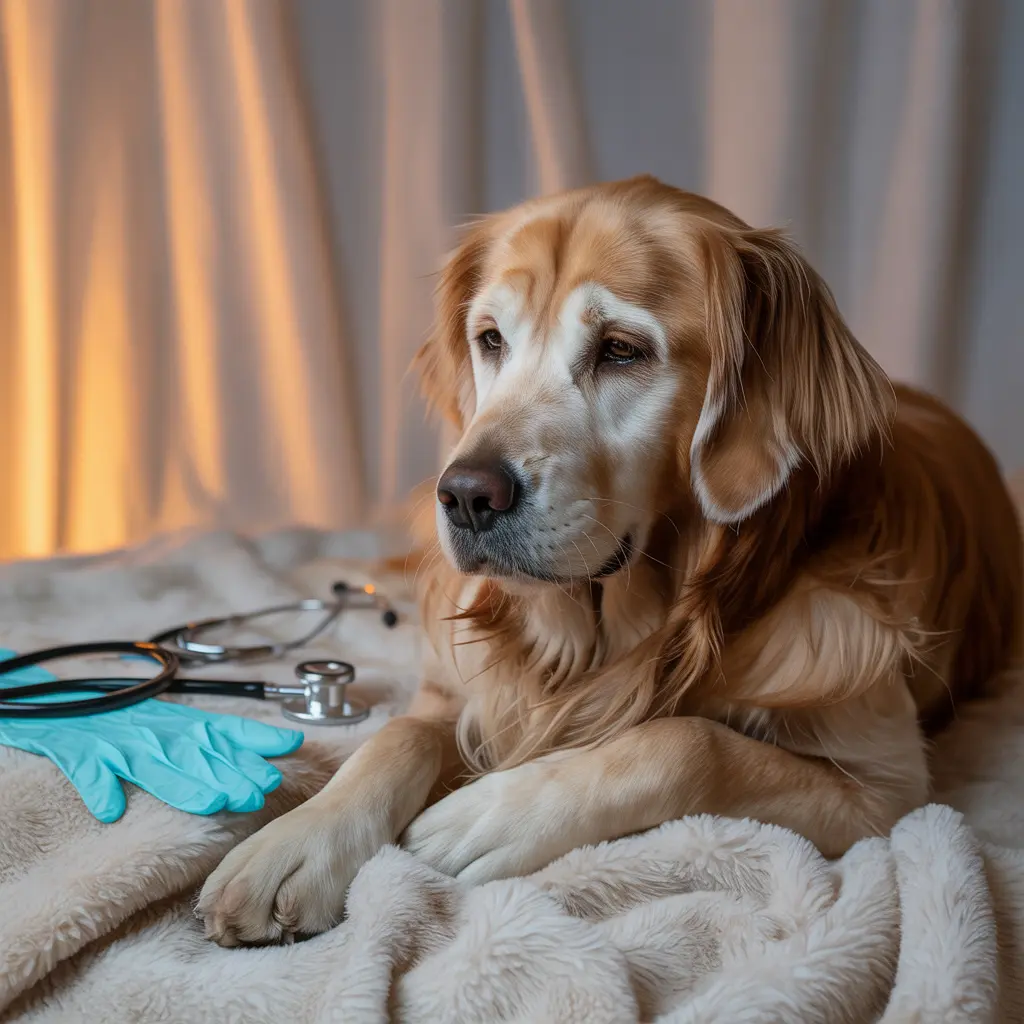Fungal pneumonia in dogs is a serious and potentially life-threatening condition that should never be overlooked. Unlike more common respiratory illnesses, fungal infections attack deep within the lungs, causing inflammation, difficulty breathing, and a progressive decline in your pet’s overall health.
Left untreated, it can lead to irreversible lung damage, organ failure, and even death. That’s why early detection, timely treatment, and preventative care are vital for your pet’s respiratory health.
As a pet parent, seeing your dog suffer from symptoms they can’t verbalize is heartbreaking. Fungal pneumonia can sneak up quietly, with subtle signs, before escalating into a full-blown health emergency. Regular mobile pet grooming in Abu Dhabi is the only way to prepare your pet to fight such diseases.
That’s why understanding the nature of this condition, how it spreads, what to look for, and how to act can make all the difference in protecting your furry friend.
What is Fungal Pneumonia?
Fungal pneumonia is a lung infection caused by specific fungal organisms penetrating deep into the lungs. Unlike bacterial or viral pneumonia, fungal variants are often more insidious and difficult to treat.
The most common fungal pathogens include Blastomyces dermatitidis, Aspergillus, and Coccidioides species.
This condition doesn’t target a specific breed or size, but certain dogs may be more vulnerable. Puppies, senior dogs, and those with weakened immune systems tend to have a higher risk. However, any dog can contract the infection if exposed to contaminated environments.
Fungal pneumonia is not seasonal and can occur throughout the year. However, dogs that spend much time outdoors, particularly in areas with moist soil, decaying wood, or bird droppings, are more likely to be exposed. The spores can be inhaled anytime, especially after heavy rainfall or construction-related soil disturbance.
Causes and Transmission in Dogs
The inhalation of fungal spores in the environment primarily causes fungal pneumonia in dogs. These microscopic spores are often found in soil, decaying organic matter, and sometimes in bird or bat droppings.
The fungal spores can enter their respiratory system when your dog digs, sniffs, or breathes near contaminated sites.
The most common fungi responsible include Blastomyces, Histoplasma, and Coccidioides. These organisms thrive in specific geographic regions. For instance, Coccidioides is more prevalent in desert climates, while Blastomyces prefers moist wooded areas.
The infection may spread through an open wound in rare cases, but airborne transmission is the most common. Dogs with weakened immune systems, such as those undergoing chemotherapy or long-term steroid therapy, are at greater risk of contracting and developing severe symptoms.
Recognizing Symptoms of Fungal Pneumonia
Fungal pneumonia can present in various ways, depending on the stage and severity of the infection. Watch for the following warning signs:
- Chronic Cough: A dry or productive cough that persists for weeks may indicate a fungal lung infection.
- Labored Breathing: Rapid or shallow breathing, often accompanied by wheezing or open-mouth breathing, signals respiratory distress.
- Lethargy Onset: A noticeable drop in energy levels, unwillingness to play, or general fatigue is a key symptom.
- Weight Loss: Unexplained weight loss or decreased appetite may occur as the body struggles to fight the infection.
- Fever Spikes: Dogs with fungal pneumonia often exhibit recurrent or prolonged fevers.
- Nasal Discharge: Thick, yellowish, or bloody nasal discharge may indicate upper respiratory involvement.
- Eye Inflammation: Some fungal infections can spread to the eyes, causing redness, swelling, or even vision problems.
- Lameness or Joint Pain: The infection may spread to bones or joints in advanced stages, resulting in limping or stiffness.
How is Fungal Pneumonia Diagnosed?
Diagnosing fungal pneumonia can be challenging because its symptoms mimic other respiratory illnesses’ symptoms. Vets usually start with a physical examination, listening to the lungs, and observing breathing patterns.
Blood tests are typically ordered to assess white blood cell counts and other infection markers.
Chest X-rays are crucial in visualizing lung inflammation, fluid buildup, granulomas, small fungal-related masses in the lung tissue. In some cases, a bronchoalveolar lavage (BAL) is performed, which involves collecting fluid from the lungs to test for fungal organisms.
Advanced diagnostic tools like CT scans and fungal cultures confirm and identify specific fungal species. Accurate diagnosis is essential to ensure the right treatment protocol is followed.
Treatment Options and Dietary Adjustments
Treating fungal pneumonia requires a combination of antifungal medications and supportive care.
Since this condition weakens the immune system and often leads to poor appetite, dietary adjustments become critical to recovery. Dogs may need high-protein, nutrient-rich foods to rebuild strength and immunity.
Hydration is also key. Ensure your pet drinks enough fluids to support lung function and flush out toxins. In severe cases, hospitalization may be required to administer IV fluids and oxygen therapy.
Common Antifungal Medications for Dogs
| Medication Name | Route | Frequency | Typical Dosage (per kg) |
| Itraconazole | Oral Capsule | Once or twice daily | 5–10 mg/kg |
| Fluconazole | Oral Tablet | Once daily | 5–10 mg/kg |
| Amphotericin B | IV Infusion | 2–3 times per week | 0.5–1 mg/kg |
Note: A licensed veterinarian must always prescribe and adjust medication and dosage depending on the dog’s age, weight, and overall health.
How to Prevent Fungal Pneumonia in Dogs
Prevention starts with reducing your pet’s exposure to high-risk environments. Avoid letting your dog dig or sniff in moist wooded areas, decaying leaves, or bird-infested spots. After outdoor play, check your dog’s fur, paws, and nose for dirt or debris.
Strengthen your dog’s immune system by ensuring regular vaccinations, proper nutrition, and scheduled vet checkups. If your dog has a pre-existing condition that compromises immunity, speak to your vet about preventive antifungal care when traveling to endemic regions.
Limiting exposure during wet seasons, keeping your yard clean, and avoiding unnecessary contact with other sick animals can also play a preventive role.
The Role of Grooming in Preventing Fungal Infections
Routine grooming is a crucial defense against various infections, including fungal pneumonia. Clean skin and fur mean fewer chances for spores or pathogens to linger and penetrate the body.
Bathing with antifungal shampoos (on vet recommendation) can help eliminate surface fungi before they become invasive. Regular brushing helps remove dirt and allergens, while trimming the hair around the ears, paws, and underbelly can reduce moisture retention, which fungi thrive on.
Most importantly, professional grooming allows for early detection of unusual lumps, skin discolorations, or wounds that could be entry points for fungal pathogens.
And now, with evolving services, you do not have to go through the hassle of visiting grooming salons. You can get the same premium services in the comfort of your home through top-notch mobile dog grooming in Abu Dhabi.
Conclusion
Fungal pneumonia in dogs is a complex but treatable condition as long as it’s caught early. Knowing what signs to watch for, how it spreads, and what diagnostic and treatment options are available can help you respond swiftly and effectively.
Combine this knowledge with prevention strategies and regular grooming, and you’ll significantly lower your dog’s risk of facing this respiratory threat.
Visit Jack Pet Grooming to Avoid Fungal Pneumonia in Your Dog!
Worried about your dog’s health or just want to keep them in their best shape year-round? Trust the professionals at Jack Pet Grooming to provide expert care, routine inspections, and top-tier pet grooming in Abu Dhabi.
Book your appointment today and give your pet the care they truly deserve.

